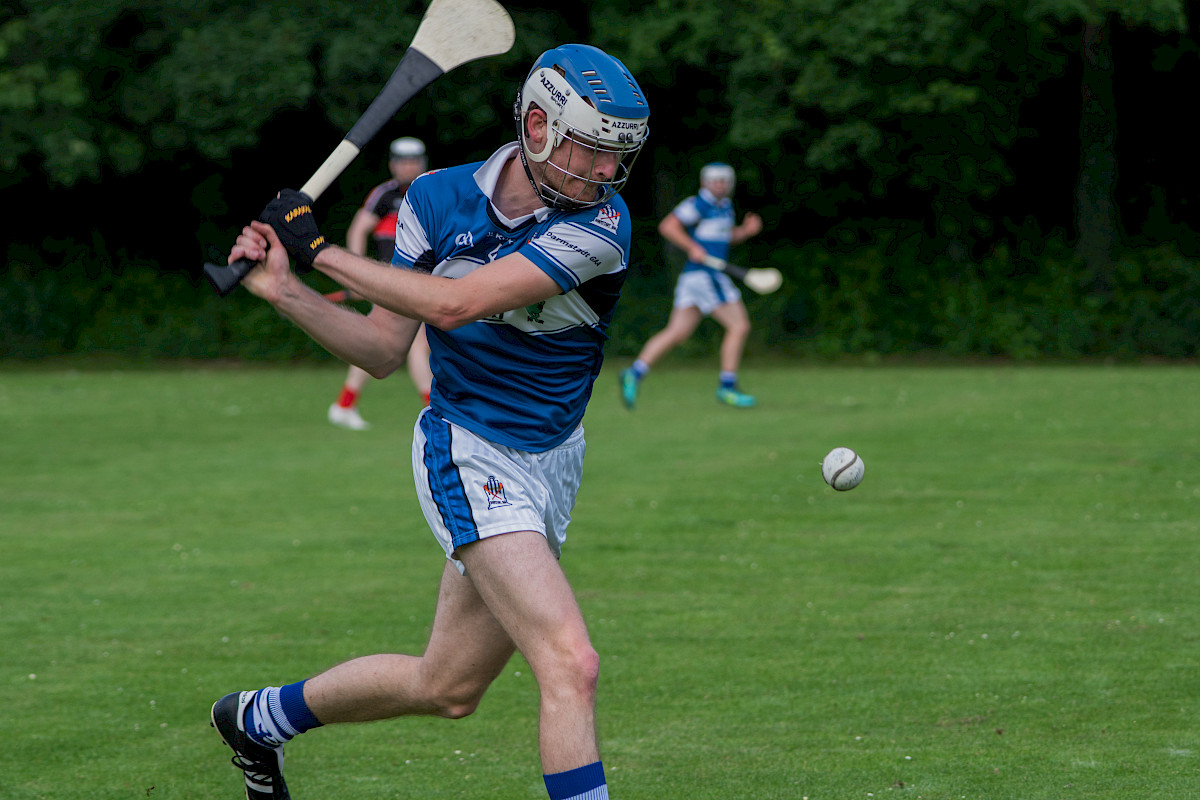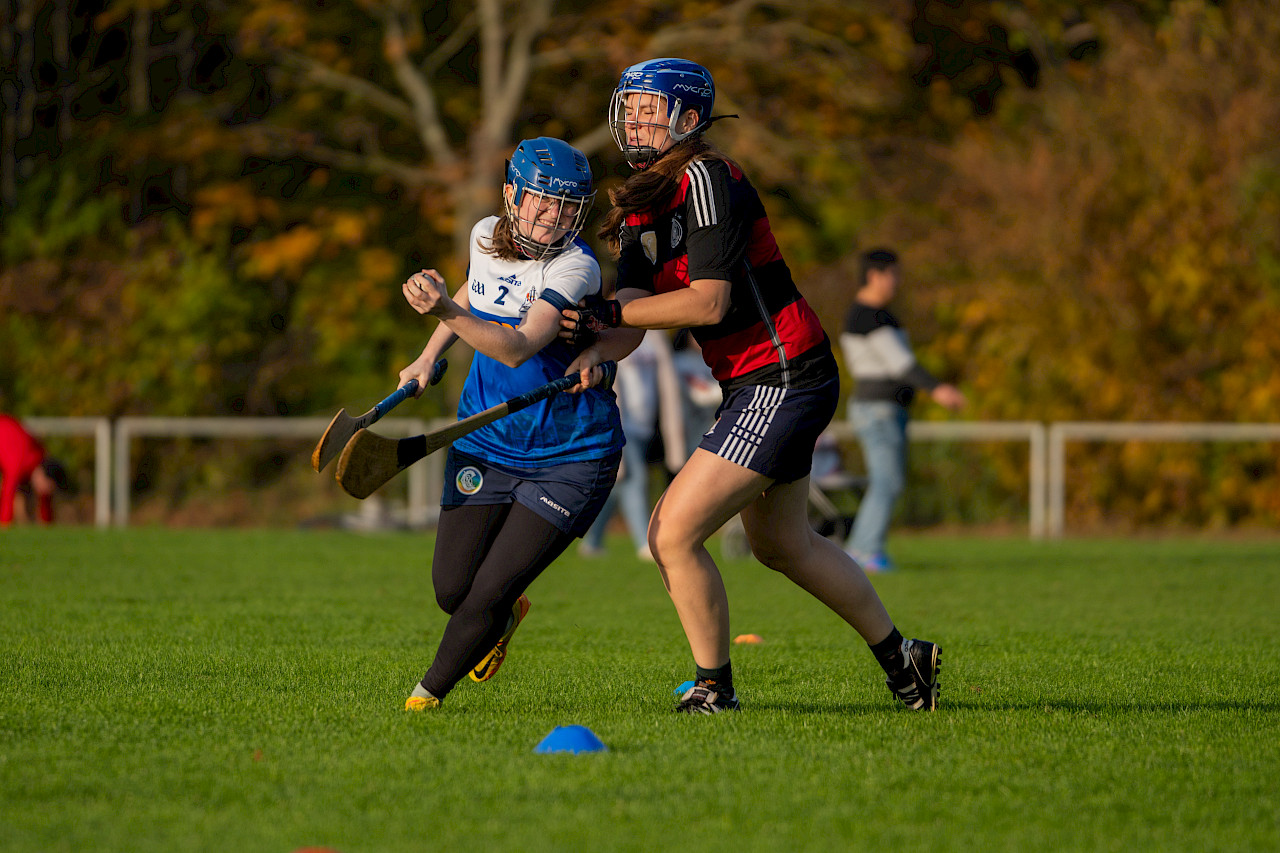

Hurling and the almost identical women's version, camogie, are considered to be the oldest field sports in the world. Ireland is proud of its over 3000 year old history and the fact that the game has been added to the UNESCO Intangible Cultural Heritage of Humanity list. Hurling and camogie are by no means ancient sports, but a large part of modern Irish society. Over 80,000 spectators make the pilgrimage to the All-Ireland Final in Dublin every year and hurling and camogie continue to captivate the masses. They are more popular on the island than soccer or rugby, for example.
The game contains elements of field hockey, soccer, lacrosse and baseball, but is a completely independent, exciting and, above all, fast sport in its own right.
Outside the Emerald Isle, hurling was and is mainly played by Irish expats, and in recent years more and more clubs have been formed with little or no Irish participation. The game is played with an approx. 90 cm long bat (hurl or hurley), flattened at the bottom, and a small leather ball - aimed at the opponent's goal.
We want to give the sport the attention it deserves and make it and its rules known outside the Irish diaspora.
The Game
- The game is played with a sliotar - a small, hard ball that resembles a baseball. It may be hit with a bat, kicked or passed with the flat of the hand (hand pass).
- The ball may not be picked up from the ground with the hand. Instead, the hurley or the feet are used.
- The ball may be caught (either after a pass or after it has been lifted with the hurley/foot) and carried in the hand twice for 4 steps or approx. 4 seconds.
- The ball may then be carried balancing on the hurley (solo run).
In this way, the ball can, for example, be caught with the hand, brought onto the hurley and carried in a solo run, only to land in the hand again and be hit from there with the hurley
- The only physical attack permitted is shoulder-to-shoulder contact (shoulder clash). Only persons who are in possession of the ball or on their way to it may be attacked.

Scoring system
- For the goals used in the game, a hit in the lower part (between the posts and under the crossbar) counts as a goal, a hit in the upper part (between the posts and over the crossbar) counts as a point.
- One goal equals 3 points.
- The team with the highest number of points (goals and points) wins the game after the time has elapsed.
Out-of-bounds
- If the ball goes out of bounds, the opposing team receives a sideline cut at the spot where the ball went out of bounds. The ball is played directly from the ground without lifting it or taking it in the hand.
- If the attacking team hits the ball over the opponent's end line (wide), the goalkeeper of the defending team receives the ball.
- If the defending team kicks the ball over its own end line (a “corner situation” in soccer), the opposing team receives the ball and a free kick from the opposite 65-meter line (the 45-meter line in camogie).
Foul play
- In the event of a foul (physical or technical), the fouled team is generally awarded a free kick at the spot where the foul occurred - except in special cases.
- In the case of a free, the player may hit the ball without being tackled. The ball lies on the ground in front of him/her and may be picked up and hit immediately.
Playing time
- The playing time consists of two halves of 30 minutes each. Championship matches have a longer playing time of twice 35 minutes.
- In continental Europe, two halves of 15 minutes each are usually played as multiple games are played on the day of a tournament.
Teams
- Teams in Ireland consist of 15 players each.
- In continental Europe, teams consist of 9 players in hurling and 7 players in camogie, as the game is played on smaller pitches (usually soccer pitches).
